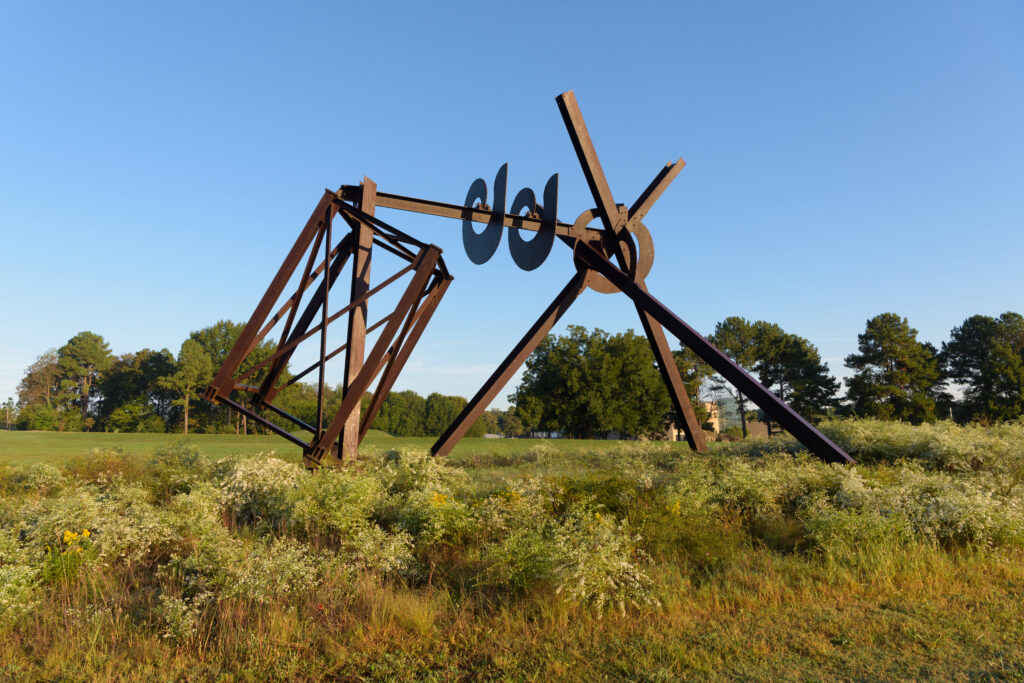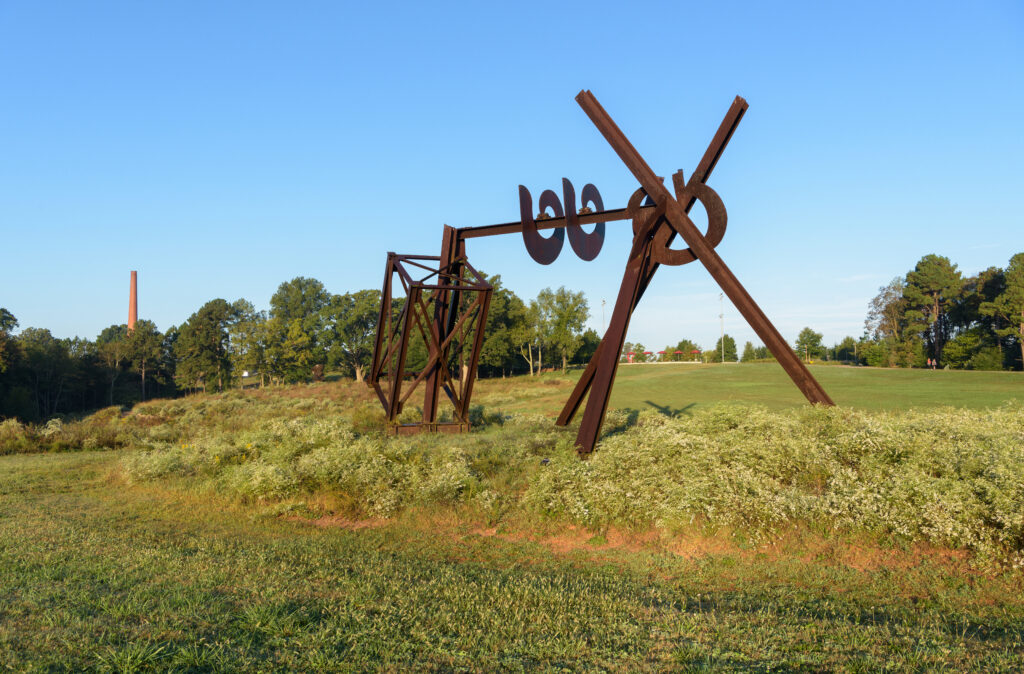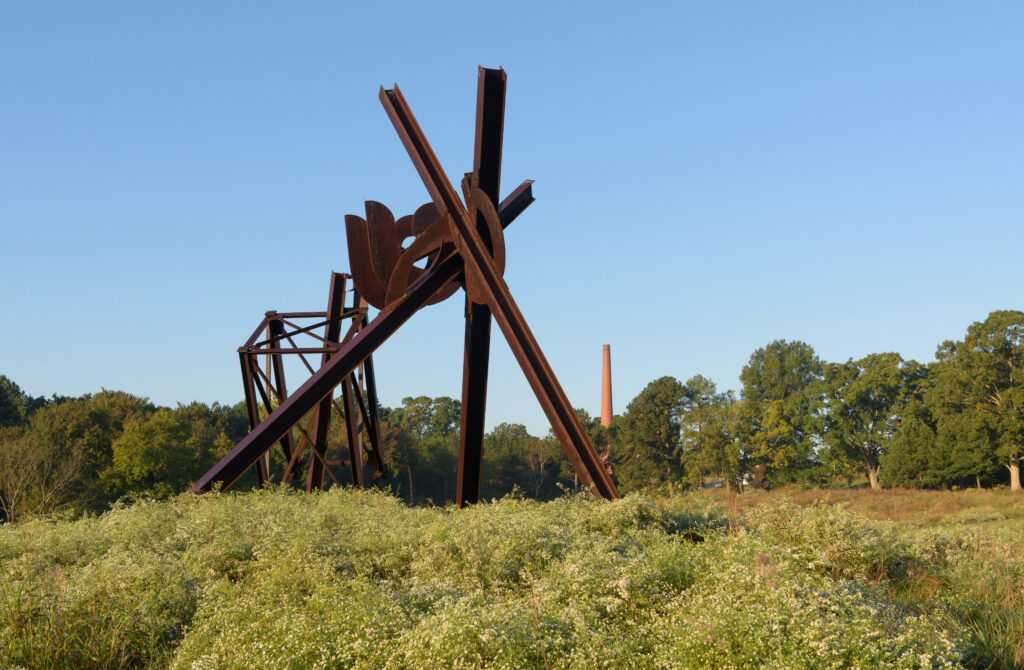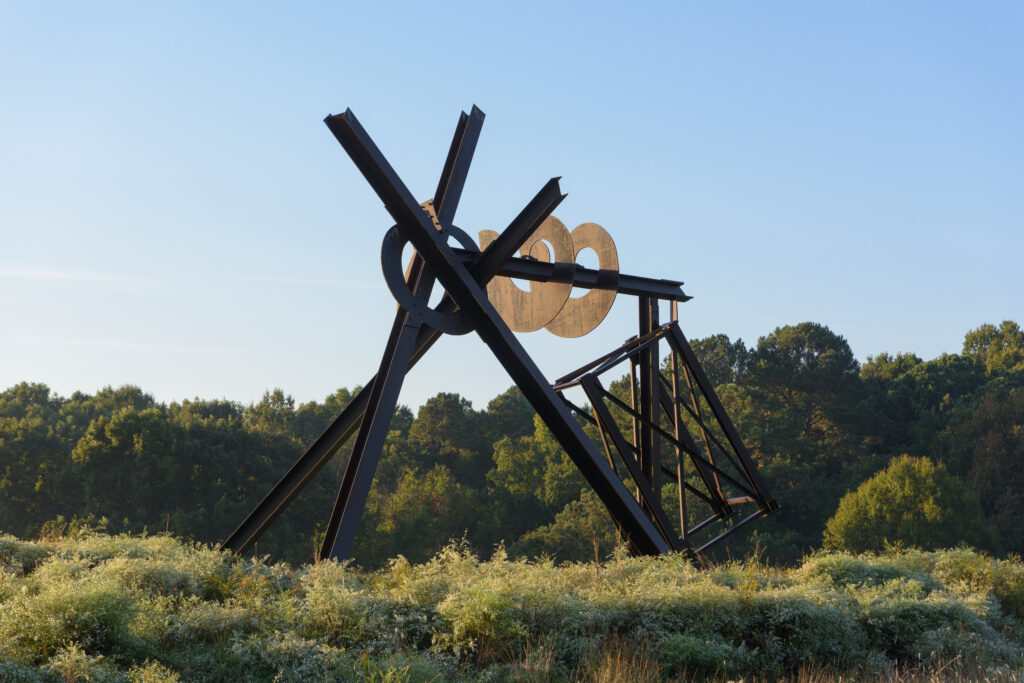No Fuss (work of art)
Artwork Info
Key Ideas
- This abstract sculpture is made up of industrial steel beams and scrap metal. It features moving elements that invite viewers to interact with the work.
- It is an example of what the artist calls “sculptural structuralism.” This style of art focuses on the physical structure of a sculpture instead of a specific subject.
- Mark di Suvero is an abstract expressionist sculptor who welds scrap metal into monumental outdoor sculptures. His work often features steel and wood beams that intersect with each other.
- Di Suvero was part of the abstract expressionist movement in New York City. He still lives and works there today.
- In 1986 di Suvero founded a sculpture park in New York City. He wanted to give artists a public space to display their work outdoors.
Learn More
This abstract, three-dimensional sculpture is made from industrial materials, including steel beams and scrap metal. It was created in 2008 by Mark di Suvero, who is an abstract expressionist sculptor. This work of art has been on loan from the artist since 2016. It features five angled beams that connect with circular forms and a three-dimensional rectangle shape that appears to balance on a single point. Like most of Di Suvero’s work, No Fuss is extremely large in size and incorporates motion with swinging steel beams and rotating forms. These moving elements encourage viewer participation.
No Fuss is an example of what the artist calls “sculptural structuralism.” In this style of art (that he created), there is no subject. The art style focuses on the physical structure itself.
Di Suvero’s monumental sculptures often feature steel and wood beams that intersect with each other. Some of his sculptures (like this one) feature spiral elements.
I’m always conscious of balance and gravity’s center point. Like a dancer or an acrobat — I’m feeling for that invisible point. For me, gravity is about space, the way water is to a surfer. Gravity isn’t an adversary or an obstacle but an enabling force.
Mark di Suvero
Di Suvero was born in China and raised in San Francisco. He was part of the abstract expressionist movement in New York City, where he still lives and works. In 1986 he founded Socrates Sculpture Park in New York City, to give artists a place to display their work outdoors. He is an advocate for public art, which is meant to be seen and enjoyed by everyone.
Additional Resources
Resources for Teachers
- Explore a timeline of the artist’s life and work.
- Read an interview with the artist.
- Read an article about the artist’s role in building community.
Resources for Students
- Explore a catalog of the artist’s public sculptures.
- Read a biography of the artist.
- Watch a video tour of the artist’s studio.




